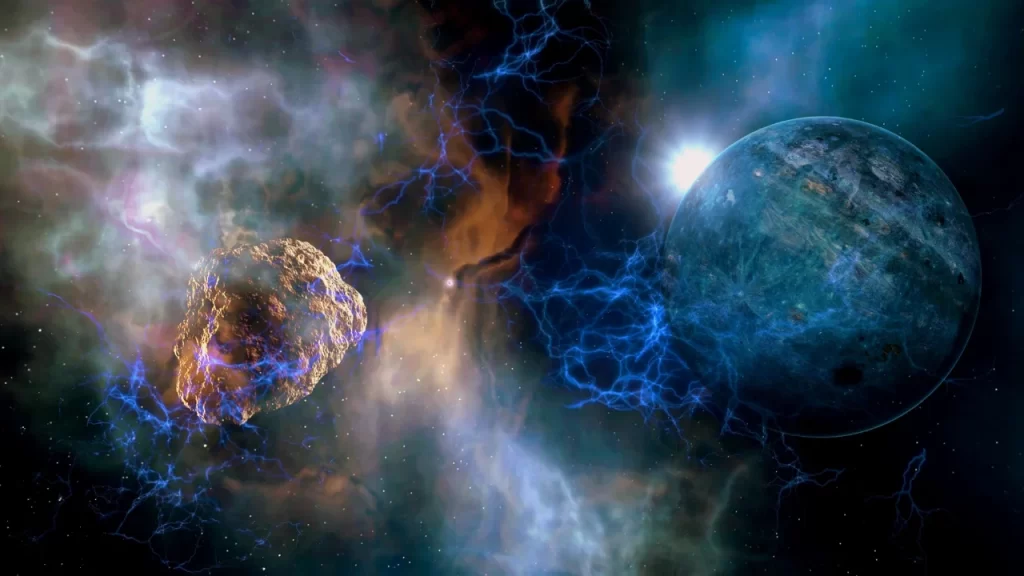Tag: Asteroid And Comet Difference
Asteroid And Comet Difference
Asteroid And Comet Difference: Asteroids and comets are two distinct types of celestial objects that orbit the Sun, and they differ in several ways, including their composition, appearance, and behavior. Here are the key differences between asteroids and comets:

Asteroid And Comet Difference
-
Composition:
- Asteroids: Asteroids are primarily composed of rocky and metallic materials. They are often referred to as “minor planets” because they are similar in composition to the terrestrial planets like Earth.
- Comets: Comets consist of a mixture of water ice, frozen gases (such as carbon dioxide, methane, and ammonia), dust, and rocky materials. They are often called “dirty snowballs” because of their icy nature.
-
Appearance:
- Asteroids: Asteroids typically have a solid and rocky appearance. They do not develop a visible coma (a cloud of gas and dust) or a tail, and they tend to reflect sunlight like rocky surfaces.
- Comets: Comets often display a distinctive appearance when they approach the Sun. As they heat up, their ices start to sublimate, releasing gas and dust, which form a glowing coma and a tail that points away from the Sun due to the solar wind and radiation pressure.
-
Orbital Characteristics:
- Asteroids: Asteroids usually have more circular or elliptical orbits, resembling the orbits of planets. They are found primarily in the asteroid belt, a region between the orbits of Mars and Jupiter.
- Comets: Comets often have highly elliptical orbits that can take them from the distant reaches of the solar system (Oort Cloud or Kuiper Belt) to much closer to the Sun during their active phases.
-
Location:
- Asteroids: Most asteroids are found within the asteroid belt, although some may have orbits that cross Earth’s path, making them potentially hazardous near-Earth objects.
- Comets: Comets can originate from various regions of the solar system, such as the Oort Cloud (comets with long orbital periods) or the Kuiper Belt (short-period comets), and they can approach the inner solar system from these distant locations.
-
Activity:
- Asteroids: Asteroids are generally considered inactive. They do not exhibit the kinds of outgassing and tail formation that comets do when they approach the Sun.
- Comets: Comets become active when they approach the Sun, and their ices start to vaporize and release gas and dust. This activity makes them visible from Earth.
-
Size:
- Asteroids: Asteroids can vary significantly in size, from a few meters to hundreds of kilometers in diameter. Some of the largest asteroids, like Ceres, are considered dwarf planets.
- Comets: Comets are typically smaller than asteroids, with nuclei ranging from a few hundred meters to a few kilometers in diameter.


In summary, while asteroids and comets are both celestial objects in our solar system, they differ in terms of composition, appearance, orbital characteristics, location, activity, and size.
Read More
- Molecular Weight Of Nitrogen
- Molecular Weight Of NaOH
- Difference Between Force And Pressure
- Difference Between Diode And Rectifier
- Difference Between AM And FM
Frequently Asked Question (FAQs) Asteroid And Comet Difference
-
What is the fundamental difference between asteroids and comets?
The fundamental difference lies in their composition and behavior. Asteroids are primarily composed of rocky and metallic materials and do not exhibit cometary activity, such as outgassing and tail formation. In contrast, comets are composed of ice, dust, and rocky materials and display visible tails and comas when they approach the Sun.
-
Where are most asteroids and comets located in the solar system?
Most asteroids are found in the asteroid belt, a region located between the orbits of Mars and Jupiter. Comets can originate from various regions, including the Oort Cloud (long-period comets) and the Kuiper Belt (short-period comets), which are much farther from the Sun.
-
What causes the tails of comets?
The tails of comets are caused by the sublimation (vaporization) of ices in the comet’s nucleus as it approaches the Sun. Solar radiation and the solar wind push the released gas and dust away from the comet, forming a glowing coma and a tail that points away from the Sun.
-
Do asteroids ever have tails?
No, asteroids do not develop tails. They lack the icy compositions that lead to the outgassing and tail formation characteristic of comets.
-
Can comets become asteroids, or vice versa?
While both asteroids and comets can change orbits over time due to gravitational interactions, they typically retain their essential characteristics. For instance, a comet will still have its icy composition even if its orbit changes, and an asteroid will remain rocky and metallic.